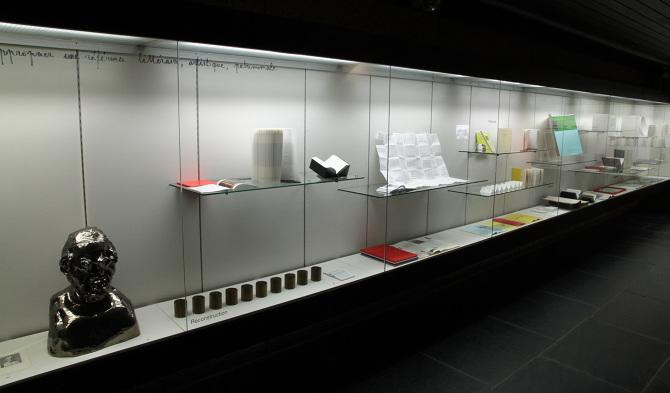« Remake, le livre et la céramique en question »
Musée royal de Mariemont
Chaussée de Mariemont, 100
7140 Morlanwelz
Belgique
Tel. : +32(0)64 21 21 93
Fax : +32(0)64 26 29 24
OPEN :
Every day except Mondays, unless they fall on Bank holidays.
From October to March from 10.00 to 17.00.
From April to September from 10.00 to 18.00.
Closed on 1/1 and 25/12.
October 25th 2013 - February 2nd 2014
The exhibition, initiated by L’atelier du livre de Mariemont, will set a dialogue between contemporary artist’s books and ceramics with ancient works of art from the Precious Library and from the museum’s decorative arts’ section. Curators of the exhibition : Nadia Corazzini, Marie-Blanche Delattre, Sofiane Laghouati, Anne-Françoise Rasseaux, Ludovic Recchia
Different kinds of appropriation will be illustrated, spectacular or discreet, humoristic or serious, all challenging. Amongst them:
- for the ceramics section : Nicolas Bovesse, Cathy Coëz, Johan Creten, Christian Gonzenbach, Lucile Soufflet
- for the book section : Jérémie Bennequin, Jürgen Bey & Hella Jongerius, Christian Boltanski, Marcel Broodthaers, Guillaume Constantin, Eva Evrard, Claire Morel, Michalis Pichler, Edward Ruscha, Yann Sérandour, Laurent Sfar, Bernard Villers, … as well as the contributors of L’ Atelier du Livre.
Remake, as in the movies
As the remake, which evokes the renewal of a cinematographic success, the appropriation of references is a creational process in itself.
Motivated by esthetical, patrimonial, testimonial, sentimental or economical goals, the artists invest the formal and/or semantic universes of former works of art or of nature linked elements.
To feel the past and reinterpret it like a possible present, to bounce on what already exists so as to create a continuity or a break, to recycle forms and functions, to reinvest ideas, … the appropriation is multiform.
The book and ceramics revisited
This process has always manifested itself through imitation, counterfeit, parody, pastiche or plagiarism, but it has tested new ways since the 1960’s. At that time, which claims the end of ideologies and great artistic currents, many artists will choose the exploration of well-known but little used techniques and materiality, rather than the recognized genres (painting, engraving, and sculpture), they are traditionally attached to. This is how new book and ceramic arts will appear: both being located at the juncture between the usual and the exceptional, between the unique and the multiple, they enable artists to renew the interrogations, to set a dialog, to confront.
In the 1980’s, the “appropriation art” makes the arts domain porous to the realities of consumer society. This is attested by a tendency to sample the past, to remix success’, to fragment or recompose our history.
In ceramics, numerous artists lean into the history of their specialty. In line with technologic traditions which forged both this artistic discipline and its imaginary, the artists juggle with techniques, forms and past settings to compose new and original creations.
In the book field, the art of appropriation is particularly marked by the evolution of society (industrialization, a disruption of representations following the two world wars, assertion of the consumer society) and by the evolution of techniques, particularly printing (lithography, offset, printer). The book is revisited as container and as content: forms and sizes, text and reading, copyright and “copyleft”.
A catalogue which plays the appropriation card: playing upon references, the catalogue itself slips into the “skin” of an Atoma notebook. Directly recognizable by the Belgian user accustomed to it since childhood, the diverted notebook becomes a catalogue, ever the while maintaining the main stroke of genius of its invention: the mobility of the pages.
